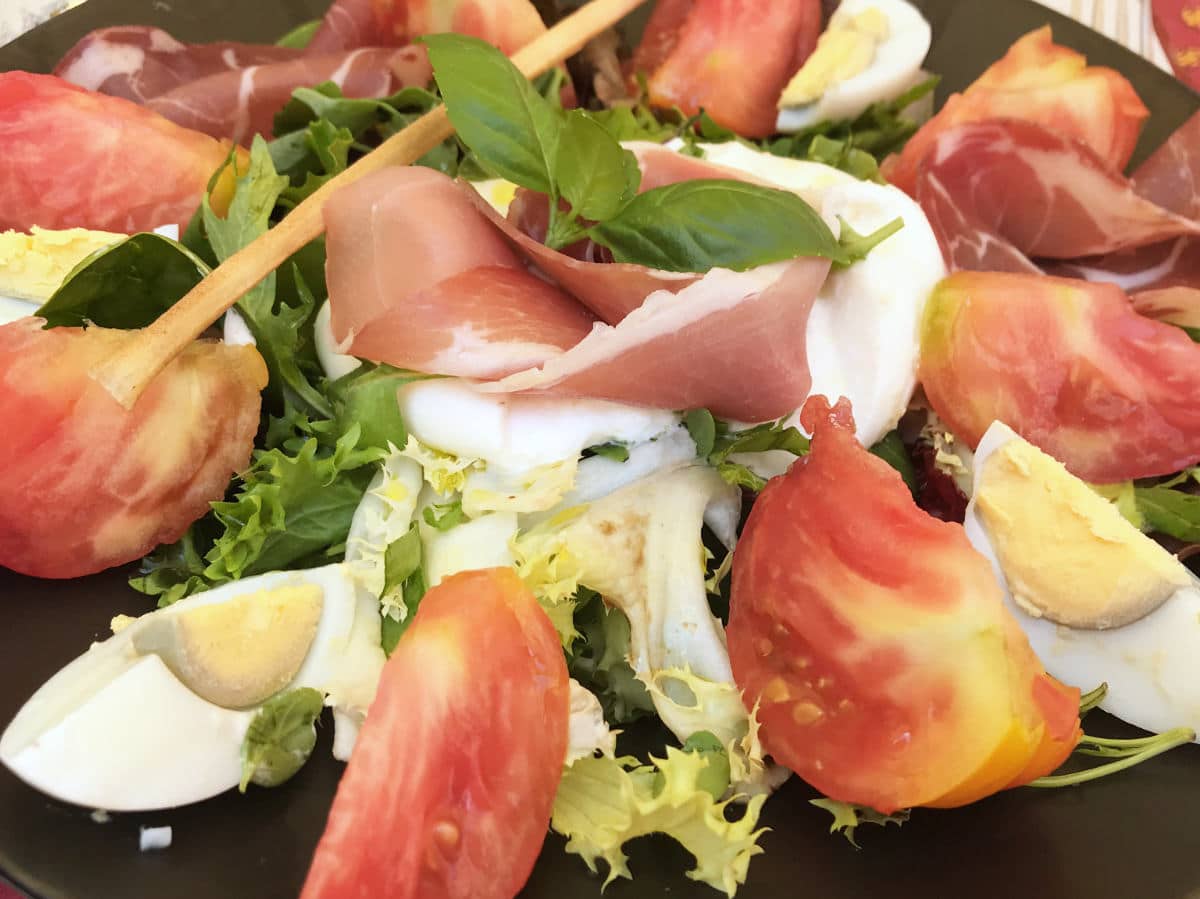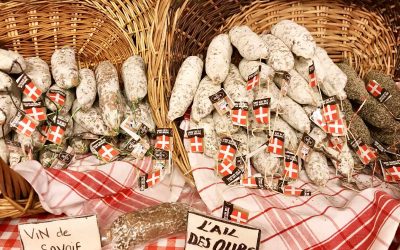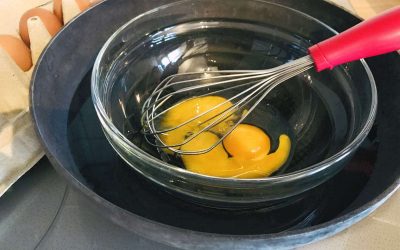A region of sun, culture, and cuisine! Provence is one of France’s most popular holiday destinations with its beautiful coastline, unspoiled countryside, and picturesque villages. It is also famous for its food and wine, which attract as much attention as its beaches.
Consisting of a diverse geographical landscape from the hilly landscapes to large cities that date back to Roman times, many provençale recipes have stood the test of time to become classics.
Visitors to the region are sure to enjoy themselves eating and drinking around Provence. And why not? The food is amazing, the weather is fantastic and it is generally a great place to explore. (I may be biased as I have family in the area, but it is true!)
So if you’re planning on visiting the Côte d’Azur (French Riviera) and around, here are the top traditional foods in Provence, along with the drinks, that will have you feeling like a local. Bon appétit!
- 1. Calissons
- 2. Pastis
- 3. Bouillabaisse
- 4. Aioli
- 5. Salade Niçoise
- 6. Pan Bagnat
- 7. Tomates à la Provençale
- 8. Ratatouille
- 9. Chicken Provençale
- 10. Meringue
- 11. Socca
- 12. Panisse
- 13. Lavender ice cream
- 14. Provence AOC and Côtes du Rhône Wines
- 15. Nougat
- 16. Fougasse
- 17. Pissaladière
- 18. Tapenade
- 19. Fruit confit
- 11. Liqueur de Farigoule
- 21. Fiadone
- 22. Picon
- 23. Fleur de sel
- 24. Olives de Provence
- 25. Boules Fourrés au miel de Lavande
1. Calissons
The traditional sweet from Aix-en-Provence is not a dessert, but more of a confiserie (candy) made from melon and almond paste and is very sweet. These bite-size pieces of candy have been called the new macarons, and are a classic treat, usually given as gifts for a special occasion (or just because).
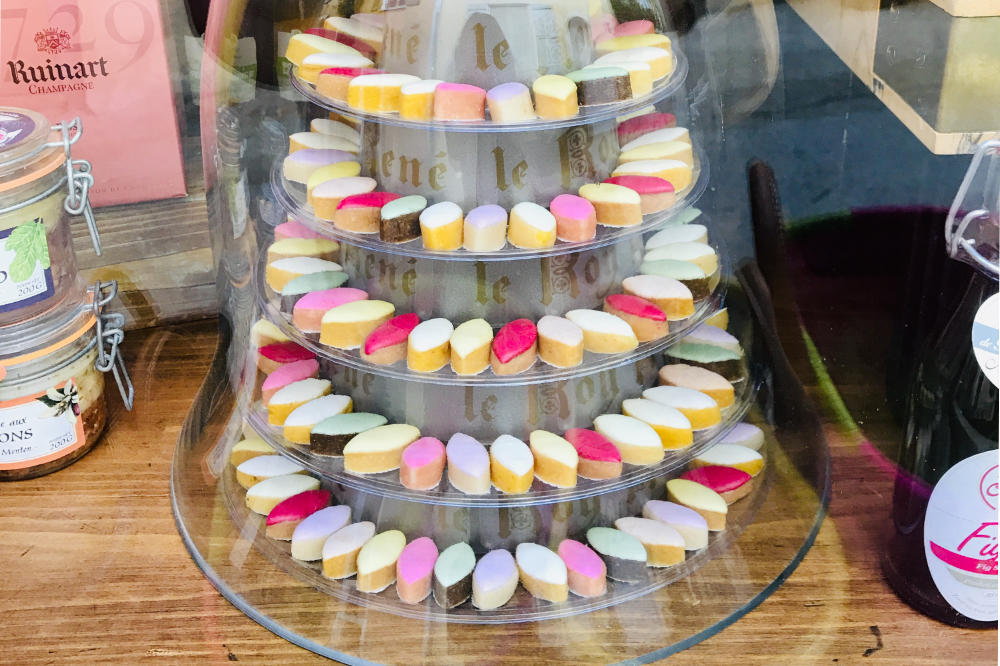
You won’t find it on the menu of a Parisian restaurant, but rather in patisseries in Provence and the south of France. They are catching on in popularity like the macaron however, so perhaps soon to come to a grocery store near you?
2. Pastis
Traditionally from the Phoenician city, Pastis de Marseille is the apéritif that has become a favorite all over France. However, with an alcohol content of 45% and sharp licorice flavor, pastis is a liquor that most foreigners find is an acquired taste.
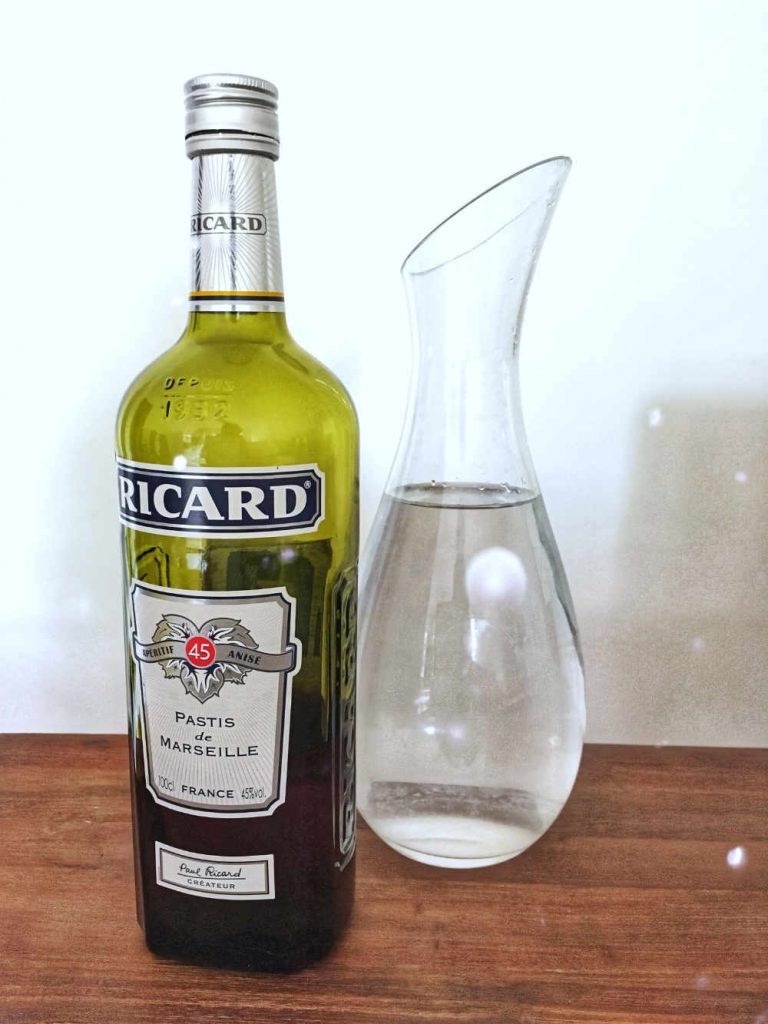
It tastes a bit like the greek ouzo, however it is so strong, it must be watered down when served.
You will easily find it on the menu of every French bar, brasserie, and café (and if you don’t you should question their French credentials!). You can read more about the French love of pastis here. Be sure to pick up a souvenir when you visit the region, or you can buy pastis here.
3. Bouillabaisse
Bouillabaisse is a traditional stew originating from the Vieux port of Marseille. It was originally a stew made by fishermen, using the bony rockfish from the bottom of their fishing nets, which they were unable to sell to restaurants or at the fish market.
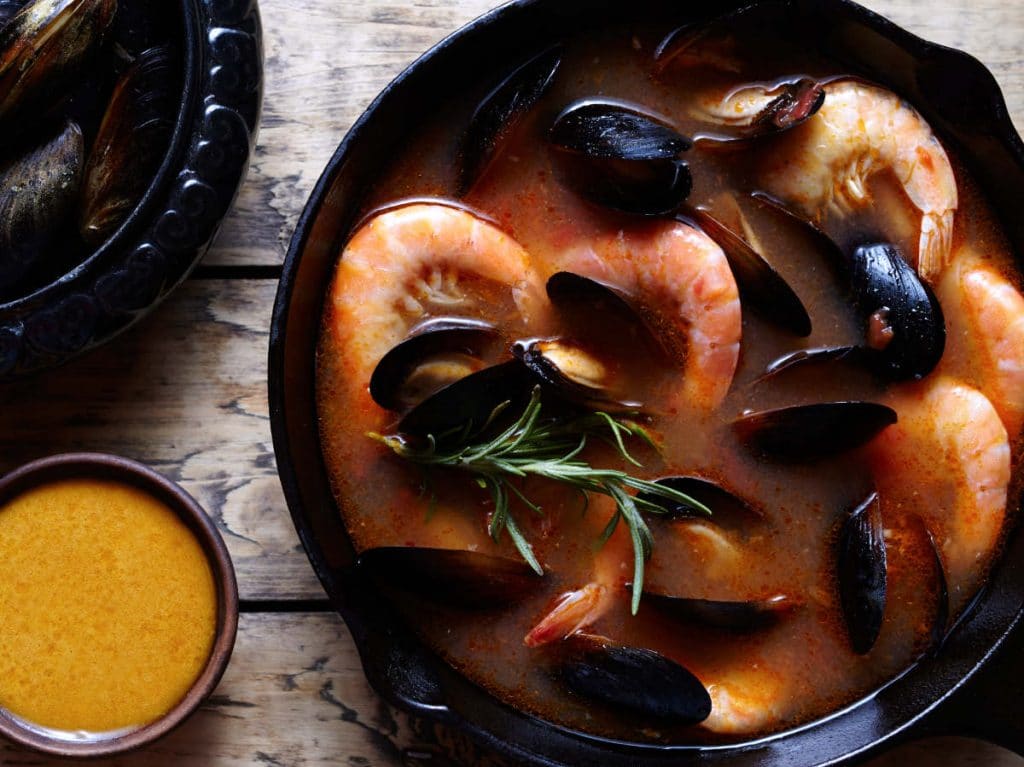
These days this delicate fish stew is considered haute cuisine. It has become so popular that an official “charte de bouillabaisse” was drawn up with an official recipe to avoid cheap pretenders.
Along with the bouillabaisse, a spicy mayonnaise called a rouille is served, made with olive oil, garlic, saffron, and cayenne pepper. You can get an adapted recipe for bouillabaisse here.
4. Aioli
If you wander through the small towns and villages of Provence and the French Riviera, you will see plenty of restaurant menus proudly declaring that they serve “aioli”. But aioli is not actually a dish in itself, it is one of the famous French sauces.
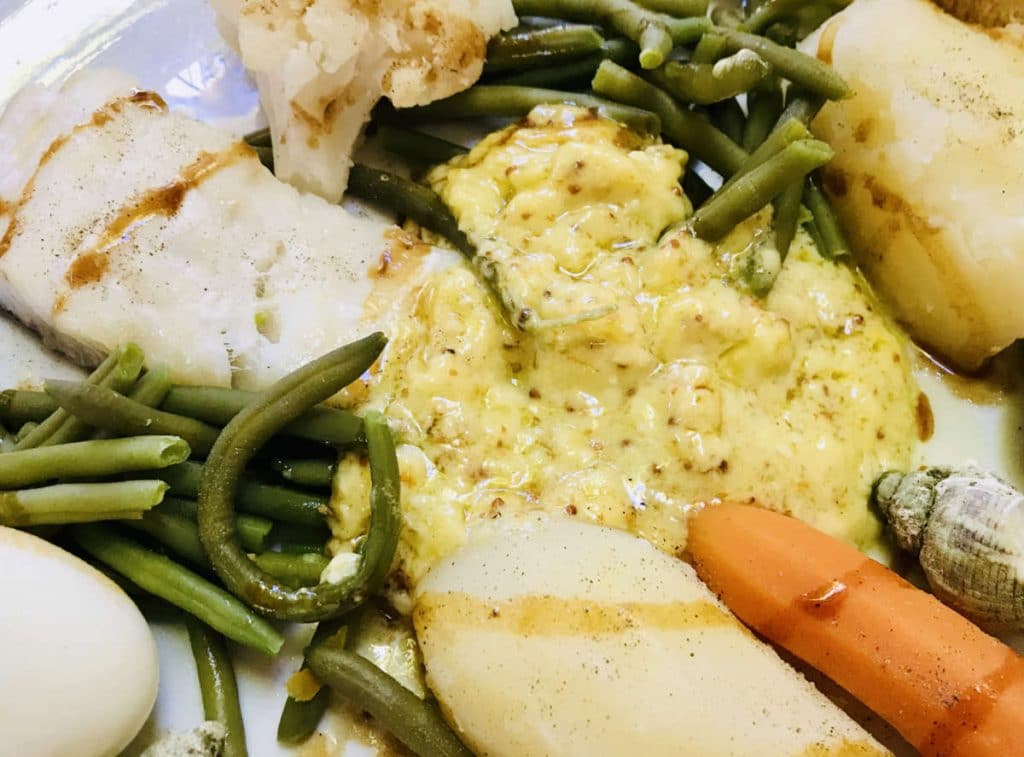
Aioli is a version of mayonnaise, with a lot more garlic in it. The mayonnaise part is made by mixing egg yolks and olive oil till it emulsifies, with it turning into aioli once the garlic is added.
The aioli sauce itself has quite a strong taste (if made correctly), so it is served alongside steamed codfish and fresh vegetables. You can get the recipe for aioli and a lighter garlic yogurt aioli here.
5. Salade Niçoise
The salad niçoise is one of those recipes that even French chefs can’t agree on. Green beans and potatoes? Tuna or anchovies? And mayonnaise!?
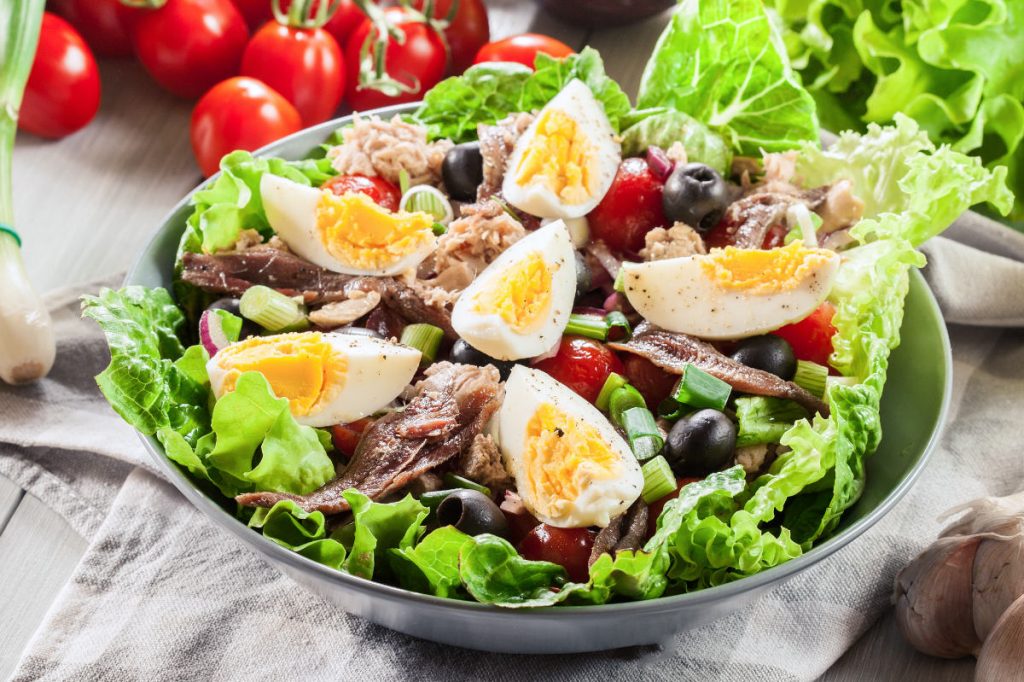
The biggest controversy is over the green beans and potatoes. Several famous French chefs have weighed in on the topic. Former Nice mayor Jacques Médecin proclaimed in his 1970s cookbook: “never, never, I beg you, include boiled potato or any other boiled vegetable in your salad niçoise.”
Get the traditional salad niçoise recipe from Nice and see what the controversy is all about.
6. Pan Bagnat
If you saw a pan bagnat in a boulangerie window, you might mistake it for just an ordinary sandwich. A lunch staple in Nice, this sandwich uses similar ingredients to the salad niçoise.
Posed on a large round bun are ingredients such as the anchovies, tuna, tomatoes, black olives, eggs, red and green peppers, mesclun leaves and olive oil. The word pan is Occitain for the french pain, meaning “bread“.
It was considered a dish for the poor, serving as a quick lunch similar to the croque monsieur.
7. Tomates à la Provençale
Tangy sweet tomatoes, sprinkled with oil and crispy breadcrumbs, it doesn’t get more exquisite than this.
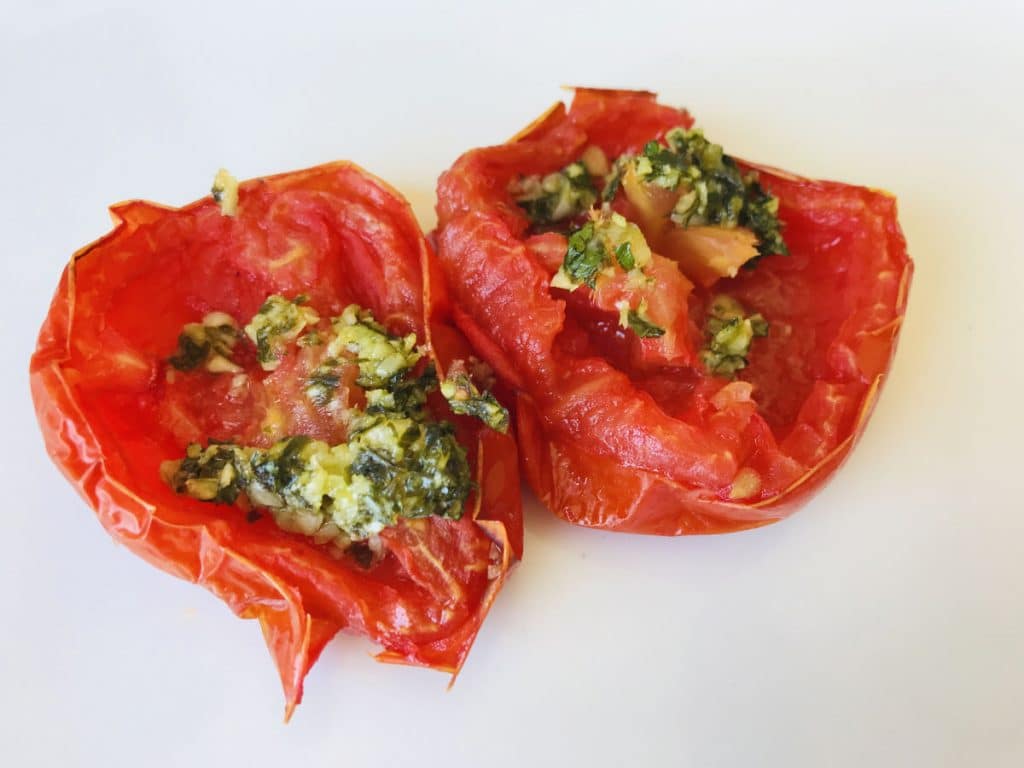
Provencal Tomatoes, or tomates à la provençale in French, is a typical French starter in the south of France.
The 3 keys to cooking any provençale dish are olive oil, garlic, and the aromatic herbs and to that end tomates à la provençale has it all in spades. The tomatoes are drenched in olive oil, garlic and various herbs.
They are then cooked for a long time and it is that long cooking process that makes the herbs and garlic meld into the tomato juice to then give it a tangy, almost bitingly caramelised flavor.
The sum becomes more than its parts. You can get the recipe to make tomates à la provençale here.
8. Ratatouille
Ratatouille is a vegetable stew from Nice, Provence in the South of France. It usually features an assortment of local vegetables, such as eggplant, zucchini, peppers, and tomatoes.
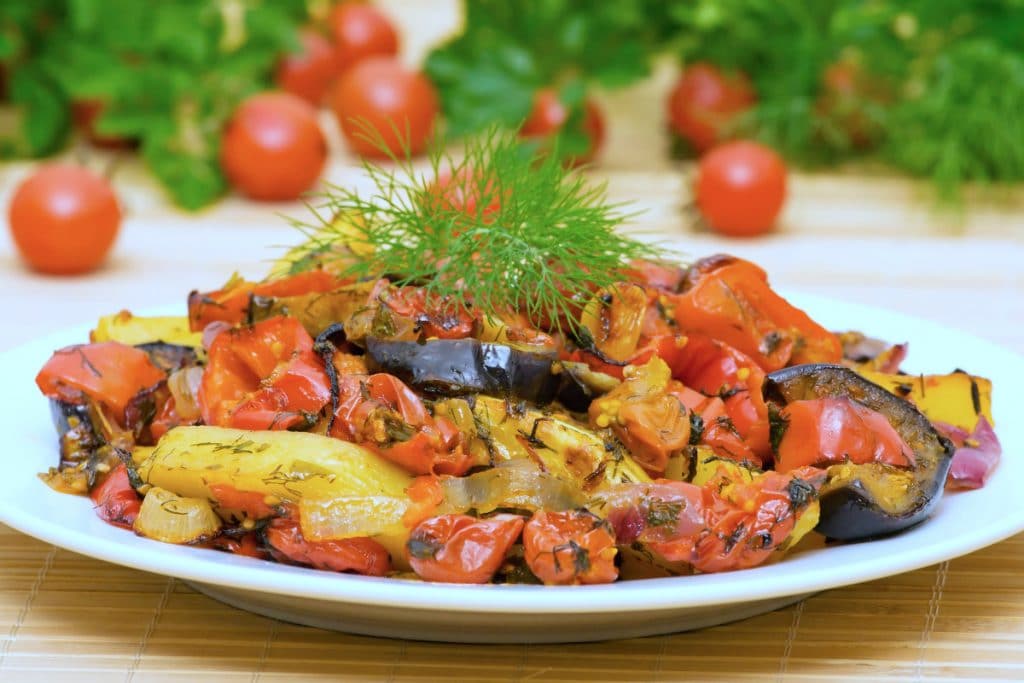
The word “rata” is thought to be army slang for ragoût, meaning “motley stew”. (The current-day version of a ragôut is a similar, but has meat in it.).
You can also try a variation of the ratatouille called the Bohemian Aubergine, which is a touch sweeter and tangier. You can get the recipe for ratatouille here.
9. Chicken Provençale
Chicken Provencal brings together the traditional ingredients from Provence, in the South of France.
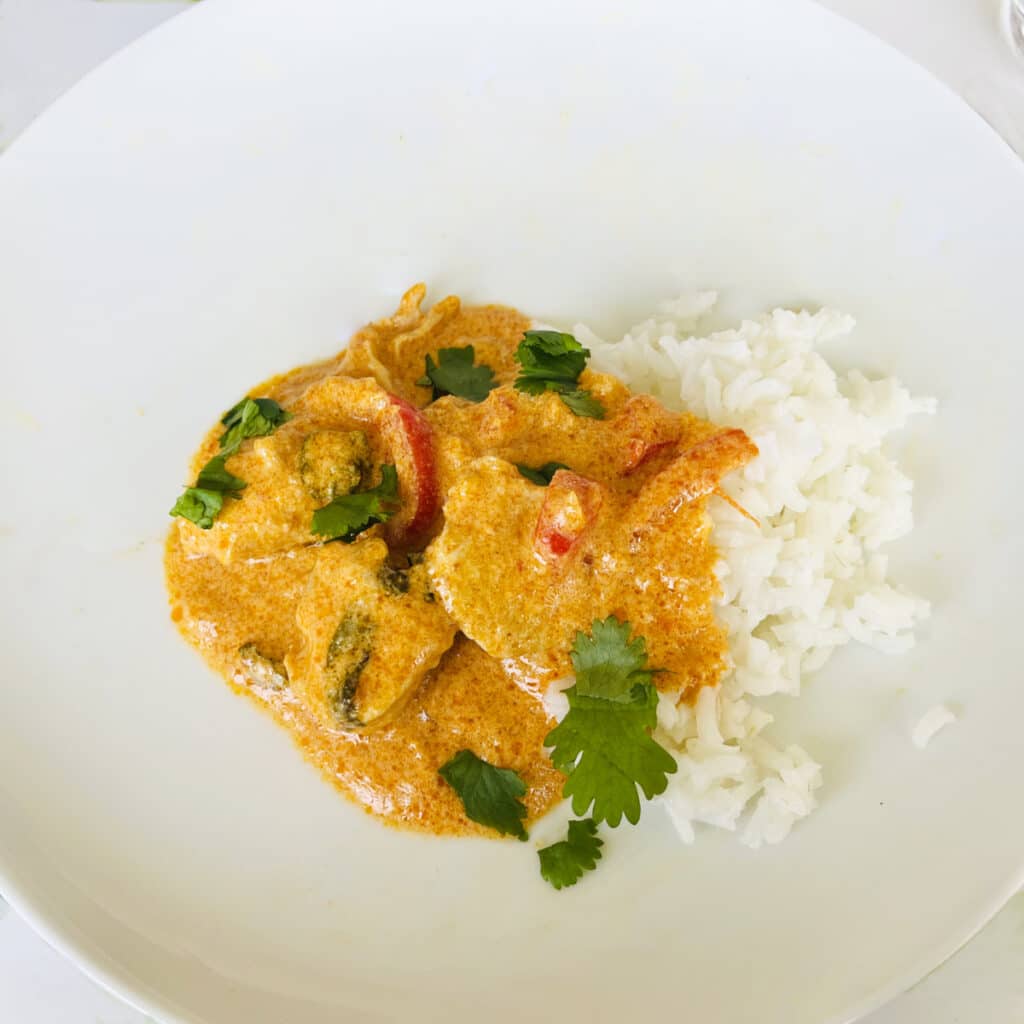
Typically it includes red and green peppers, potatoes, chicken and bacon lardons. Add to that the typical local ingredients of herbs, tomatoes, and olives, this French chicken stew will remind you of summer. You can get the recipe for chicken provençale here.
10. Meringue
A meringue is a type of dessert or candy made from whipped egg whites and sugar, along with an acidic ingredient such as lemon, vinegar, or cream of tartar.
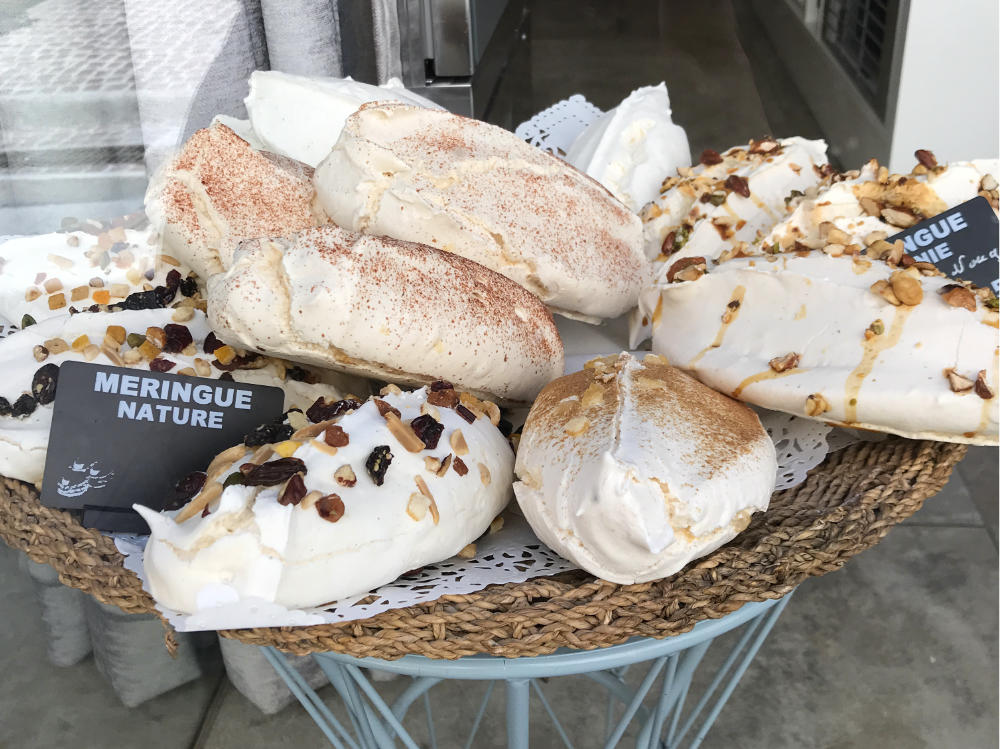
The traditional meringue from Provence is hardish on the outside, and soft and airy on the inside. They come in many flavors such as lemon or lavender, and are often topped with nuts. You can buy them from specialized candy shops and also find them at grocery stores in Provence.
11. Socca
A staple in Provence and the South of France, socca is a type flatbread made with chickpea flour. It is usually served as an appetizer and is meant to be finger food.
Socca is usually served without sauce, but some restaurants will serve it with a small dip like a tomato provençale sauce or sauce vierge.
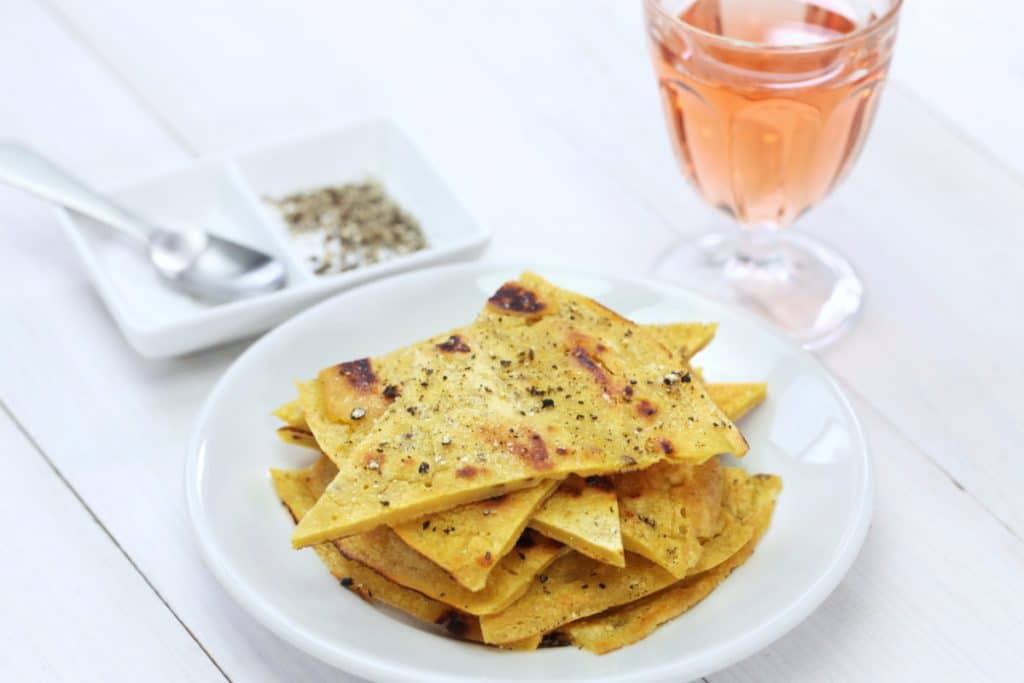
Originating in Nice, socca is quite easy to make, a bit of olive oil, salt and pepper, and of course chickpea flour and you are good to go. You can check out the recipe to make socca here.
12. Panisse
Another appetizer similar to the socca is panisse, which is also perfect for an apéro or happy hour.
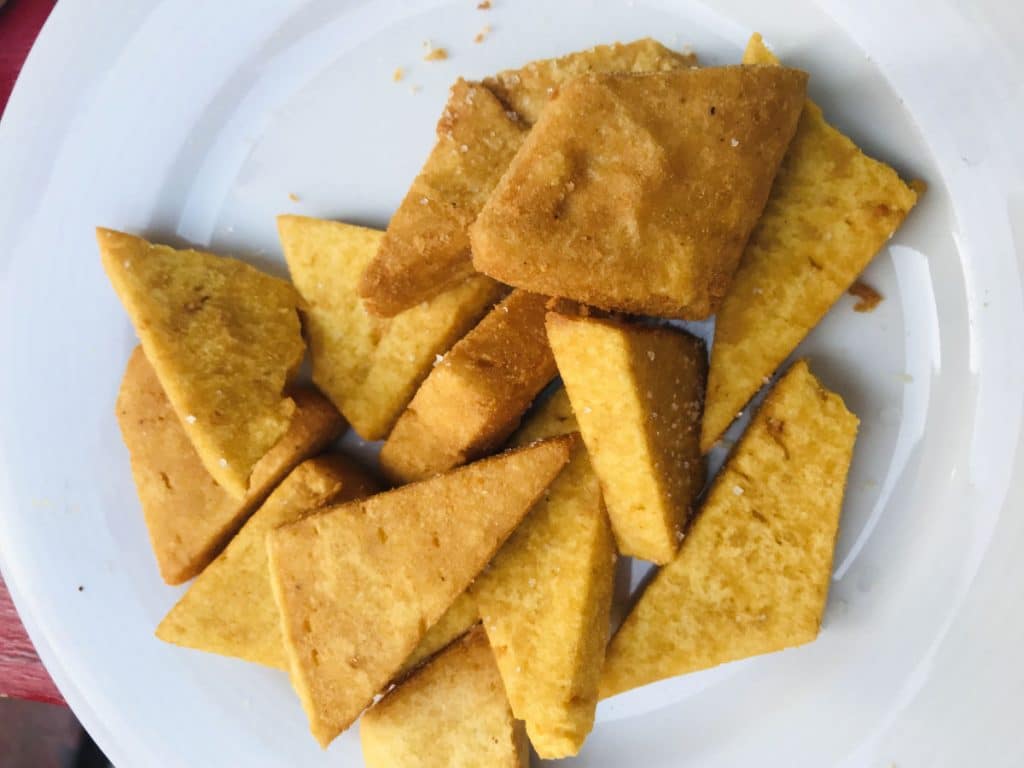
There is a bit of a disagreement as to whether it comes from Nice or Marseille, but we can put that aside to enjoy it anyway. Like socca, panisse is also made with chickpea flour and can be baked or fried.
Dairy-free and gluten free, it is one of those finger foods that you will find all over the south of France. You can get the recipe to make panisse here.
13. Lavender ice cream
You can’t come to Provence in the summer and not have some ice cream. (Especially when it is hot. Have I mentioned the lack of air conditioning in France?)
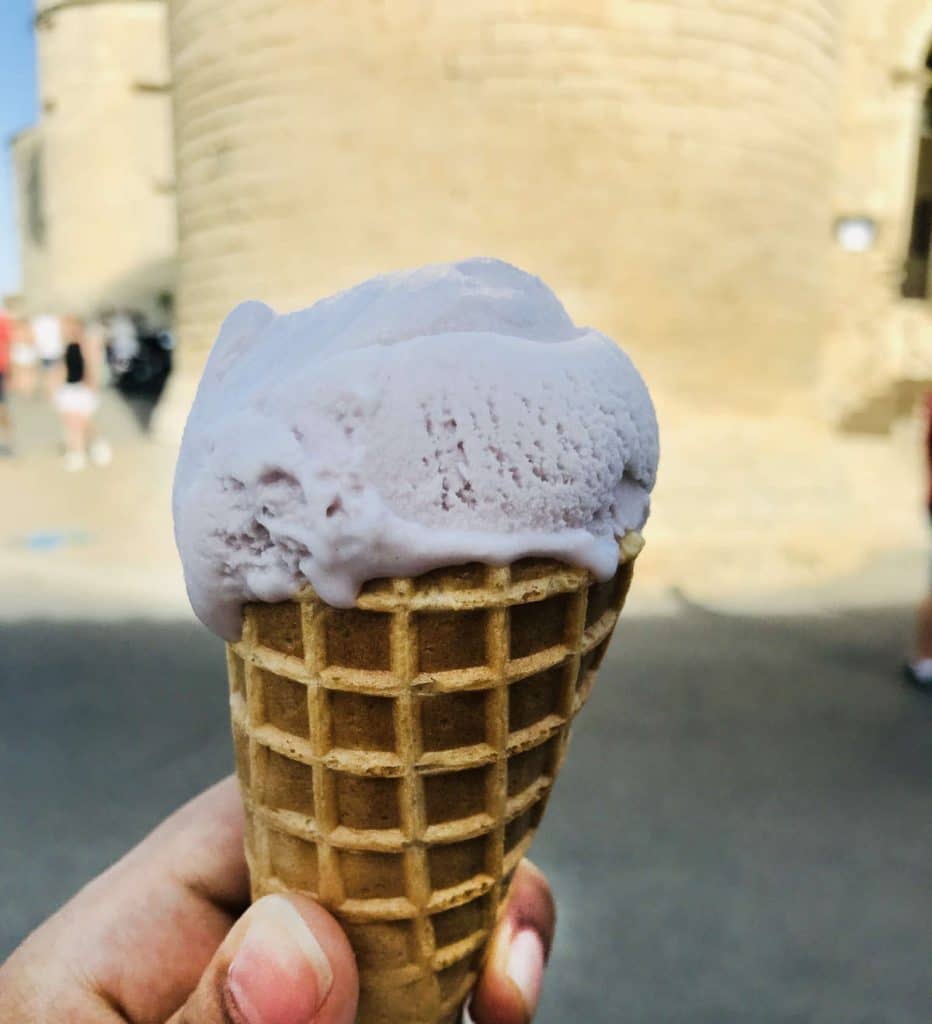
The lavender fields of Provence and with that you can get everything from lavender-flavored ice cream to honey to candles.
Along with lavender ice cream are also other flavors that are particular to Provence, from rose to things like sorbet tomate and mozza basilic. There is also a variety of violet specialties in Tourrettes-sur-Loup, a small medieval village near Nice.
But of course, one of the top bestsellers in Provence is lavender ice cream made with natural ingredients, that you can widely find all over the region, especially in summer after the lavender harvest.
14. Provence AOC and Côtes du Rhône Wines
There are two main wine appellations in the Provence region, the Côtes du Rhône AOC and Provence AOC.
Côtes du Rhône wines have become famous because there are a lot of them, and you will likely easily find a few at your local grocery store. On either side of the Rhône river in the south of France, they usually use a majority of Grenache, Syrah, and Viognier grapes.
The region stretches from Vienne in the north to Avignon in the south, with red, white, and rosé wines.
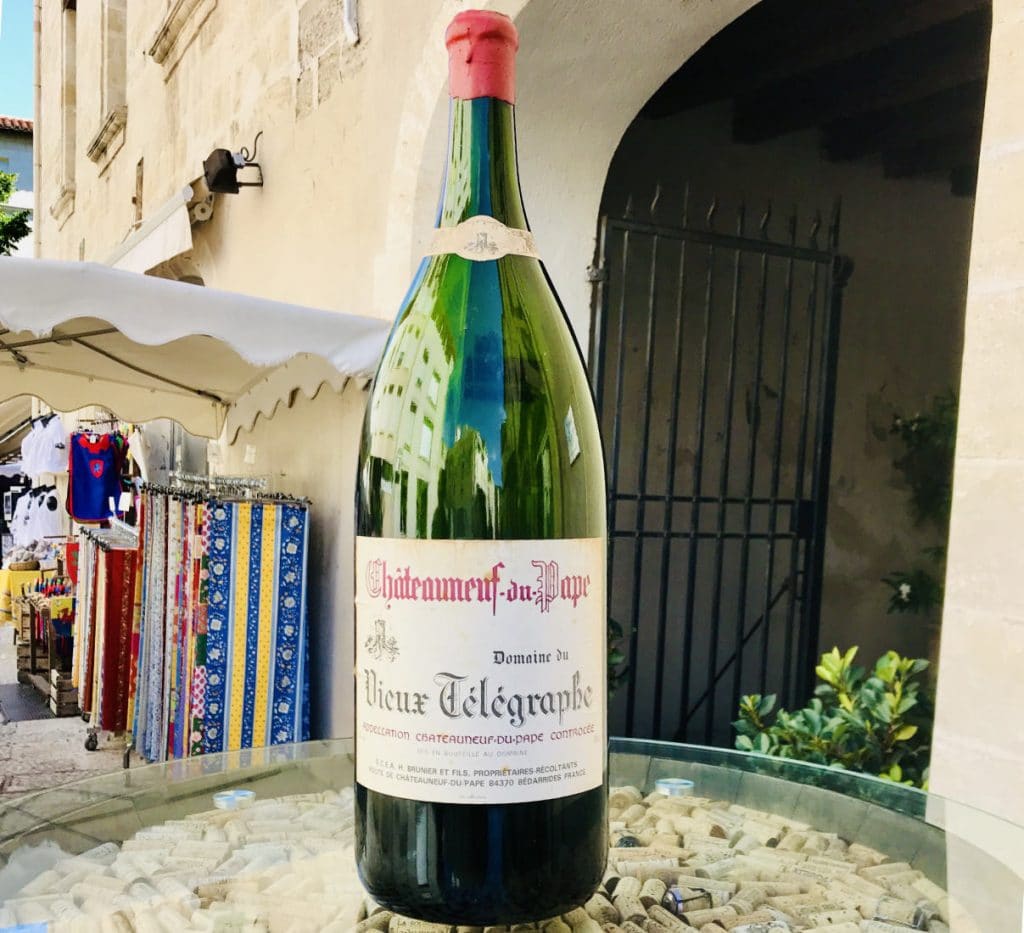
The vineyards here have existed since Roman times, using age-old techniques that have existed since then. The appellations used in this area are Côtes du Rhône, Côtes du Rhône Village, and Côtes du Rhône Cru.
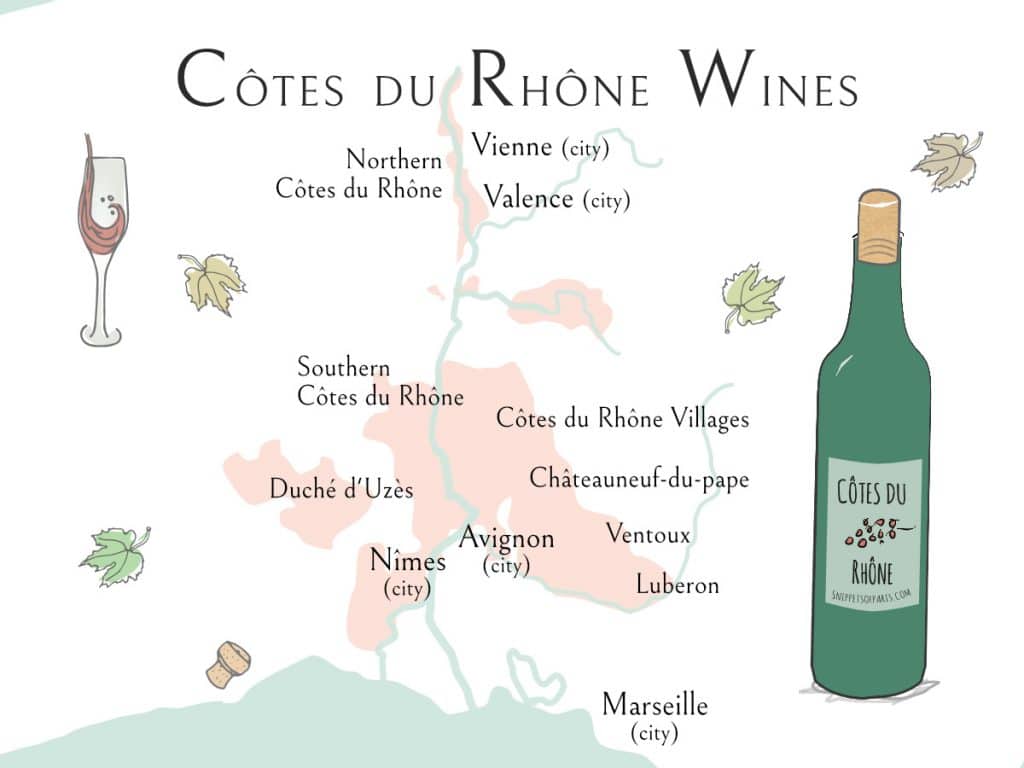
A favorite in the area is the Chateauneuf du Pape wines which have strong raspberry and plummy fruit flavors. The wines were established as a name when King Philip le Bel installed the Catholic Popes in nearby Avignon, instead of in Rome.
In addition, the area around Aix-en-Provence and Marseille is quite famous for its light rosés. The biggest names in the area are Côtes de Provence and Coteaux d’Aix-en-Provence and Baux-de-Provence. You can read more about Côtes du Rhône wines and Provence wines here.
15. Nougat
Right on the border of the region of Provence, the Montélimar nougat has long been one of the 13 desserts that are served in Provence during Christmas.
The first nougat recipes date back to the Middle East and Mesopotamia (today known as Iraq). With almond trees being grown in the area since at least the 14th century, it is not clear when the Montélimar nougat was first invented and when the first French nougat recipes became popular.
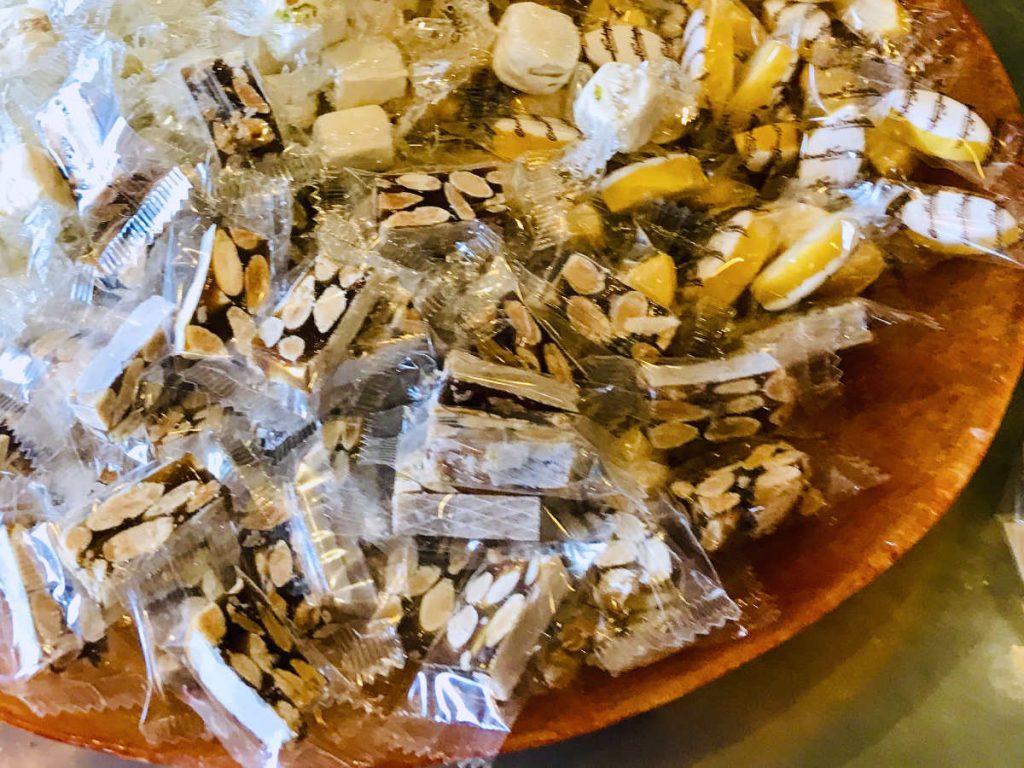
The original formula for Nougat de Montélimar was a confection made from honey, small amounts of sugar, roasted almonds, and whipped egg whites.
These days, there are a wide variety of flavors of nougat, and many different types that you can find across Provence.
16. Fougasse
A special flatbread from ancient Rome, it used to be called panis focacius in Latin. It has now become fougasse in the south of France, de focaccia in Italian cuisine, hogaza in Spain, and many more.
The provençale fougasse is cooked in the local tradition with olives, cheese, garlic or anchovies. And why not add a few herbs, onions, and lardons as well, the more the merrier.
It is usually eaten in brasseries and pubs around Provence as an appetizer like socca, and can be served warm or cold.
17. Pissaladière
Often compared to a thicker pizza, the pissaldière from Nice is not quite as flexible in terms of toppings, as it stems from the Latin word piscis meaning “fish”.
A traditional pissaldière is topped with chopped caramelised onions, black olives, and anchovies. A staple in Mediterranean pizza, it is usually considered as apéro food meant for sharing, rather than eating a whole pissaldière by oneself.
18. Tapenade
You may have had a tapenade before, but if you are in Provence, you must try it in its birthplace. Tapenade is the provençal name for a spread or condiment which from the Provençal word for capers, tapenas.
A tapenade consists usually of puréed or finely chopped olives, capers, and anchovies. It is a popular food in the south of France, where it is generally eaten as an hors d’œuvre with baguette.
19. Fruit confit
Another delicacy in the Provence region is fruit confit, or candied fruit. Dating back to the 14th century, the process involves taking whole fruit or smaller pieces of fruit and placing them in heated sugar syrup.
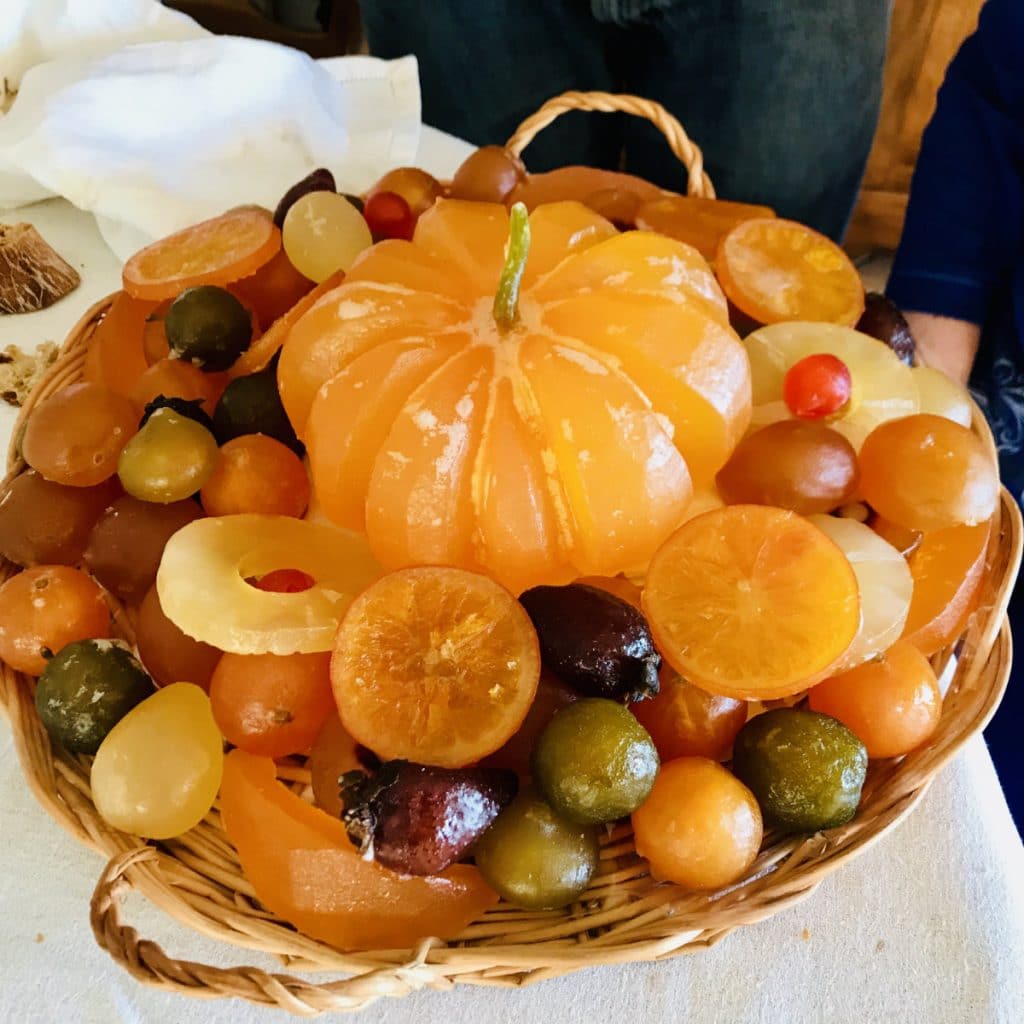
This makes the fruit absorb the moisture from within the fruit and eventually preserves it and stopping it from spoiling. Depending on the size and type of fruit, this process of preservation can take from several days to several months.
These candied fruit are then offered as treats or gifts for occasions like special holidays or Christmas.
11. Liqueur de Farigoule
With an alcohol content of 40%, liqueur de farigoule is as strong as it comes. A traditional digestif from Provence, it has a rich sugary flavor, with a taste of wild thyme.
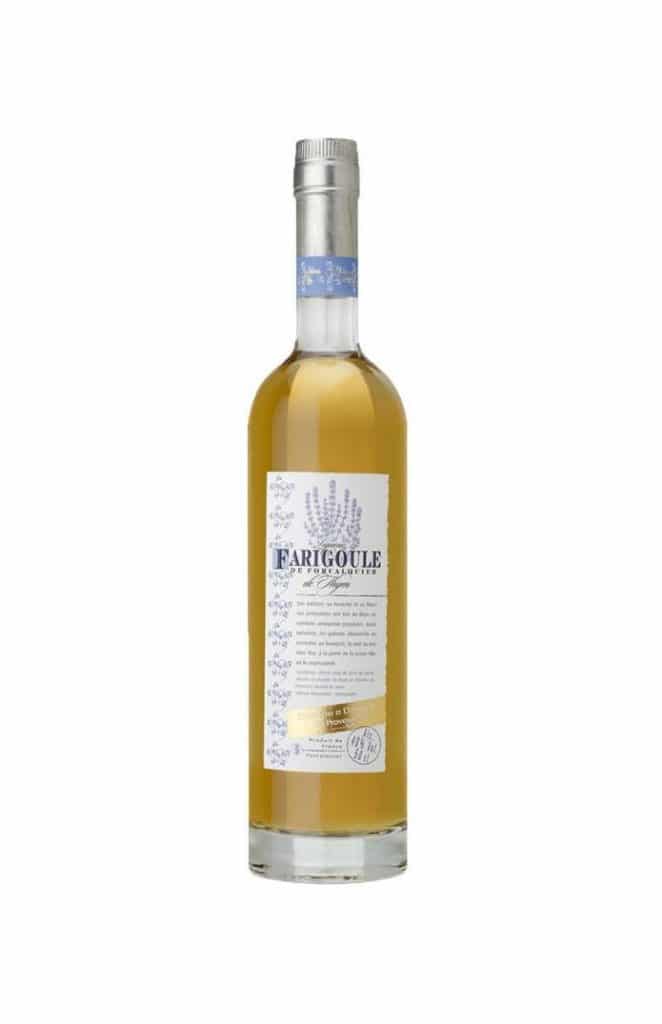
If you are looking for a palate cleanser, liqueur de Farigoule goes down smooth after a heavy meal.
It is not as widely available as the other better-known French digestifs, but if you ever make a trip to Marseille or other cities in Provence, it is a must.
21. Fiadone
From the island of Corsica just off of mainland Provence, we have the fiadone. It is a tarte made normally with brousse or ricotta cheese, grated coconut, a hint of lemon and vanilla.
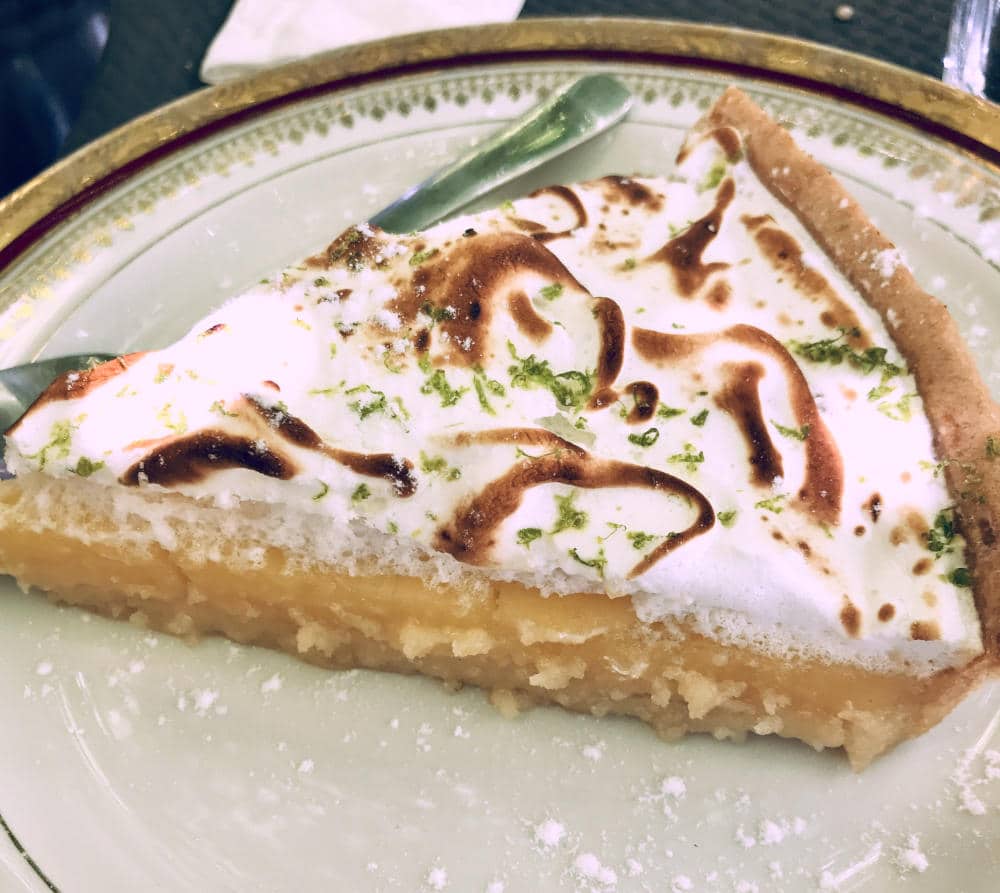
Sometimes called the Corisican cheesecake, it is very light and fluffy and goes down well on a hot summer’s day, which is why you find it typically in the South of France. You can read more about French cakes here.
22. Picon
Picon is another apéritif from Marseille, although it doesn’t taste at all like Pastis. It has an alcohol content of around 40% and is rather caramel flavored and bitter.
It was invented by a young soldier named Gaétan Picon, who invented a mixture of orange zest, cinchona, and gentian mixed in brandy in the mid-1800s. Sugar and caramel are also later added to the mix to make the apéritif what it is today.
23. Fleur de sel
You may not think of “salt” as being something to rave about, but French chefs place a lot of importance on the quality of this ubiquitous condiment in their dishes.
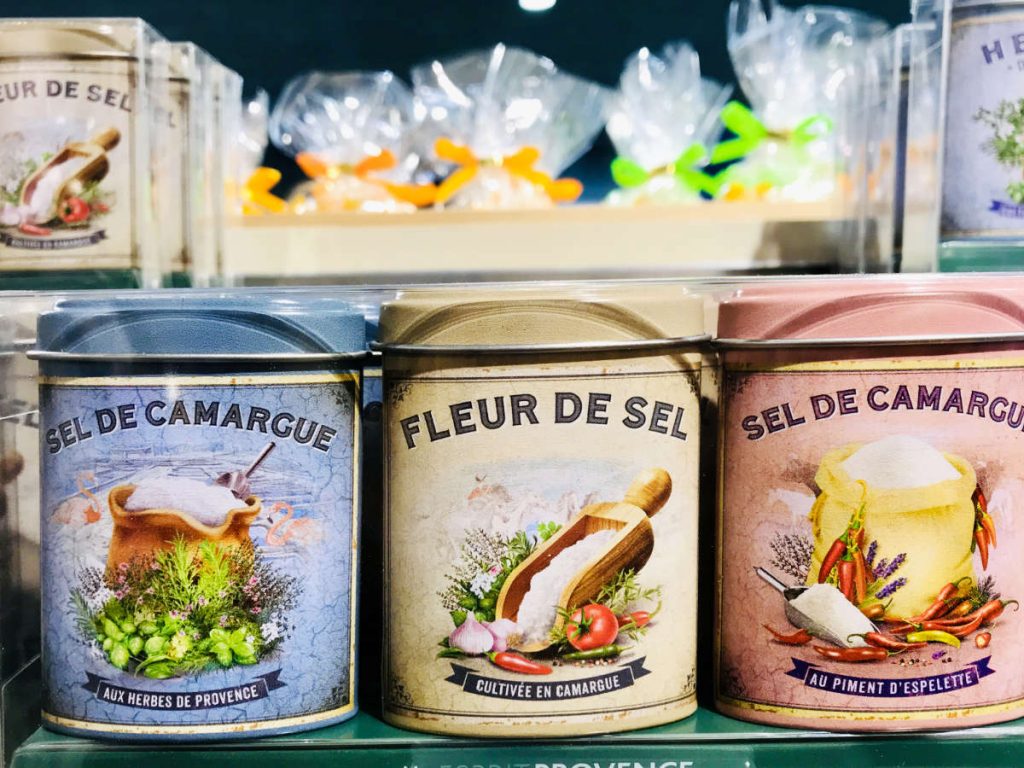
Since French food usually doesn’t have a lot of heavy spices, and generally relies on fresh ingredients, the quality of the salt plays an outsize role compared to other cuisines.
The Camargue in the east end of Provence is known for its sea salts that are produced by drawing seawater into marsh basins and allow the water to evaporate, leaving behind the salt. Some salt crystals float on the surface of the water, forming a delicate crust of crystals that is called fleur de sel.
24. Olives de Provence
The bonbon candy “Olives de Provence“, are not chocolate-covered olives. As interesting an idea as it sounds, they are actually almonds that have been covered with chocolate which is then tinted in dark green or black to look like olives.
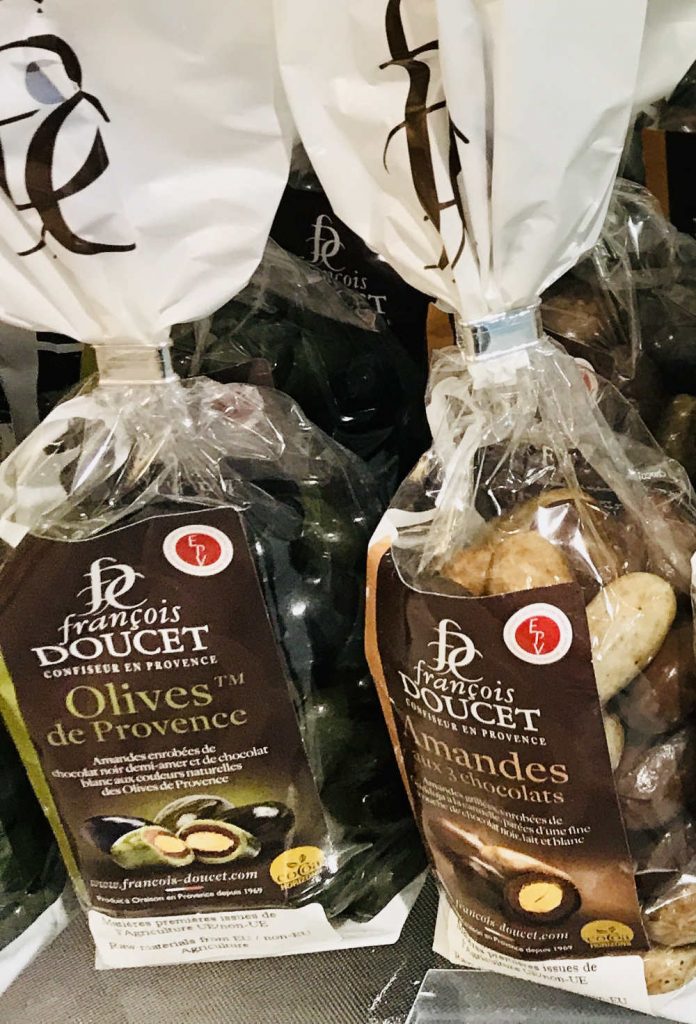
You will often find them for sale in the south of France (where olive trees are plentiful), with a somewhat helpful picture on the packet to try to explain that they are not olives inside.
25. Boules Fourrés au miel de Lavande
If you have a sore throat and even if you don’t, you may enjoy a boule fourrés au miel de Lavande.
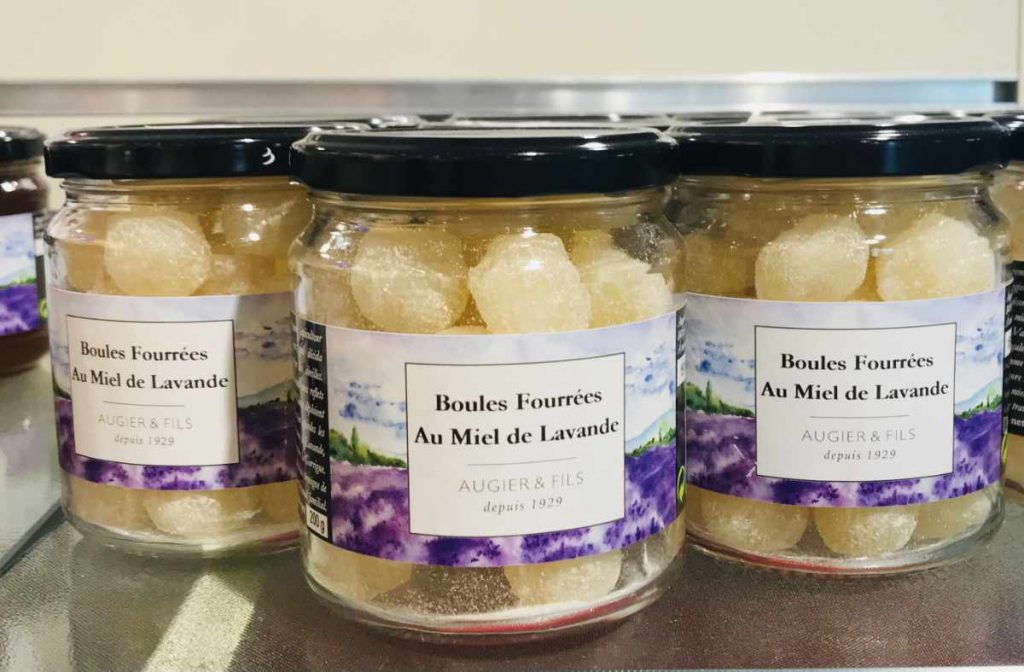
These sweet candy balls made of sugar, glucose syrup and honey and believed to date back to 1890. The honey is made from bees who have been feeding on the lavender fields of Provence, giving the honey a light taste of lavender as well. You can buy boules fourrés au miel de lavande here.

If you enjoyed that article, you may like to read more about French food facts as well as about other classic dishes throughout France. A bientôt!
